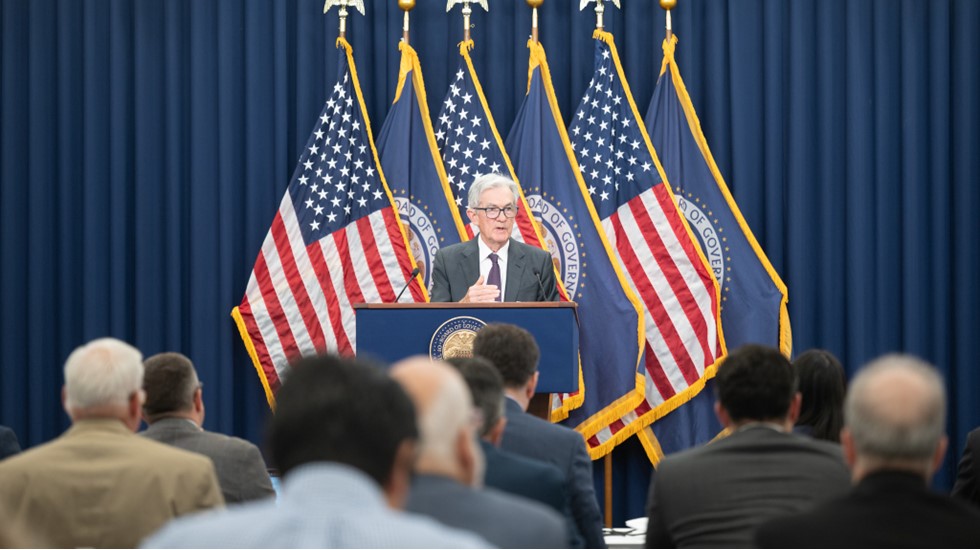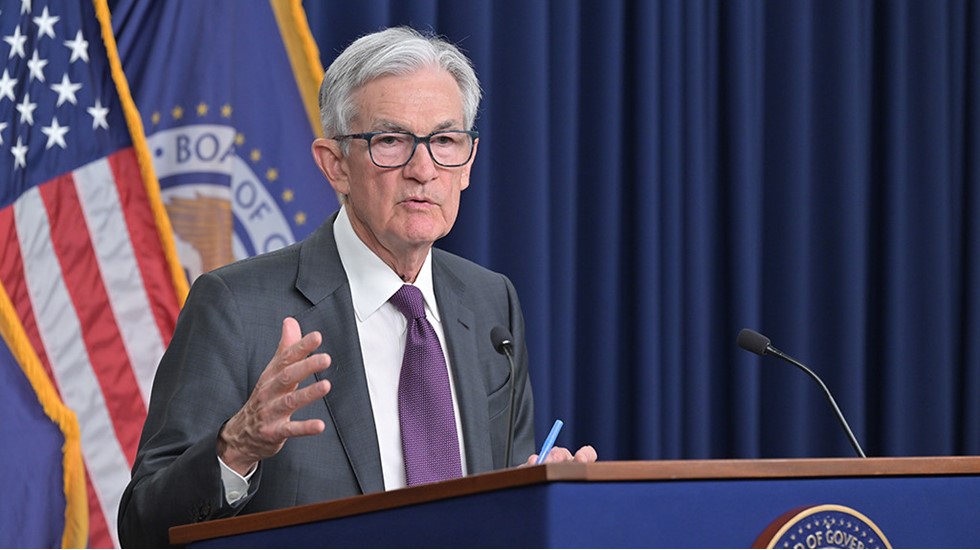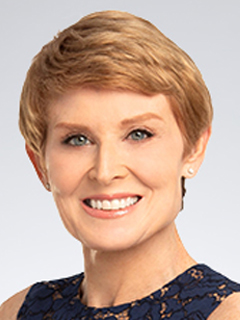
KPMG Economics
A source for unbiased economic intelligence to help improve strategic decision-making.
What’s impacting labor market participation? Why are some sectors faring better than others? How do you separate the signal from the noise? KPMG Economics answers these questions and more, providing timely insight and analysis into the economic indicators. We monitor trends and identify potential opportunities that could impact your strategic objectives. Our perspectives look at both the short-term and long-term economic factors that are critical to guiding strategic decisions.
Our latest thinking

Bye, bye Miss American Pie
The outlook: inequality and consumer angst

The great exit:
College-educated mothers of young children leaving the labor force.

Global Navigator from KPMG Economics
Redrawing the global manufacturing map: Lowest cost manufacturing will give way to near-shoring.

Navigating increasingly complex supply chains: Five trends shaping the economic landscape
Steering Through Tariffs, Tech & Turbulence.

Headlines mask weakness and inflation surge
Brace for fireworks.

Wars of the Roses: Structural change watchlist
AI will eventually help to mitigate inflationary shocks by boosting productivity growth.

Construction in the crosshairs: Downside risks via shifts in trade and immigration policy
Immigrant workers helped cool excessive wage growth.
Subscribe to insights from KPMG Economics
KPMG Economics distributes a wide selection of insight and analysis to help businesses make informed decisions.
Economic Coordinates
Explore analysis of key data indicators, such as job creation and the labor market, consumer spending, inflation, investment, housing and monetary policy. These combined data points are indicators of the overall health of the economy.
No results found.
Inflation slows upward creep
Service sector inflation proves sticky.

Consumers back away from taking on new credit card debt
A red flag would be a stock market decline.

Consumers spend ahead of more tariffs
Tariff induced price gains are still ahead.

Retail sales beat expectations
Sales rose even outside of autos.

No results found.
Job openings fall to lowest in four years
Unemployed job seekers exceed job openings.

September payrolls likely to pick up
Federal government likely to add jobs.

Fewer job openings across states
Little churn in the labor market.

Payrolls remain subdued
Government jobs are shifting sectors.

No results found.
Fed poised to cut and stop QT
Government shutdown takes 0.2% off GDP each week.

Powell corrals the cats
A “risk management cut”

Fed cuts rates cautiously
Dissents in two directions.

Fed split over rate cut decision: No signals on a September cut
The challenge for the Fed would be a deterioration in employment.

No results found.
Home sales on ice
Credit for many home buyers is drying up.

Housing construction slowed again in August
Sidelined homebuyers face unaffordable market.

New home sales down 8.2% year-over-year
Over nine months' supply of housing is on the market.

Headline figures mask weakness in housing
Affordability challenges are compounding.

No results found.
Durable goods rebounded
Gains led by aircraft orders.

Weak utilities combined with soft manufacturing
Apparel hit by de minimis change.

Trade deficit widens
The deficit nearly doubled with China.

Construction spending down three months in a row
Falling home values will dent wealth effects.

No results found.
Uncertain economic outlook sways bankers
Lending standards are becoming tighter.

Access to business loans tightens
A less favorable economic outlook

Banks are tightening credit
Banks tightened lending standards at year-end.

Loan demand weakens
There is reason for the Federal Reserve to further cut interest rates.

No results found.
Central Bank Scanner: Trade policies impact central banks
Inflation decelerates as global demand weakens.

Latin America slows in the second half of 2025
Tariffs are the wild card.

Look for weaker growth in Latam in 2025
Fiscal sustainability remains a concern.

Five key considerations as US faces port strike
45,000 dockworkers on the East Coast and Gulf Coast are poised to strike on October 1st unless a last-minute deal is brokered.


Global Economic & Geopolitical Outlook webcast
Get ready for the Global Economic & Geopolitical Outlook webcast on September 24! Join KPMG global regional chief economists and senior advisors as they unpack the latest monetary policy decisions from global central banks, policy shifts, trade impacts and what’s ahead for the global economy. Don’t miss this essential Q4 strategy session—register now and stay informed.
KPMG Economics in the news:
- Fed cuts as prices rise and economy slows
Diane Swonk, chief economist at KPMG, noted that "some tariffs made their way into food prices. Food at home soared 0.5%, the hottest monthly increase since the height of pandemic inflation in June 2022." And bad news for coffee lovers: - prices surged by 3.6% in August alone, the fastest monthly pace since April 2011, and are up almost 21% from a year ago, "as the full effects of the 50% tariffs levied on Brazil last month work their way onto store shelves." Swonk notes that "typically, tariffs represent a one-time bump in price levels," which is how the Fed likely justified a rate cut despite the uptick in prices.
September 22, 2025 | The Mercury News
- Fed Says Unemployment Has Edged Up But Remains Low
Diane Swonk, chief economist, KPMG: First of all, it's really clear that Powell corralled the cats and assume that Waller and Bowman did not dissent in part because of the strong retail sales data, which also revealed inequality and something else that’s going on out there, and that is that spending on restaurants went up after adjusting for inflation and spending at grocery stores actually fell after adjusting for inflation in the retail sales numbers.
September 18, 2025 | CNN
- Lone Dissent Shows Powell Kept Fed United Amid Trump Pressure
Fed Chair Jerome Powell managed against the odds to forge a near-unanimous consensus at this week’s policy meeting, with new Governor Stephen Miran the only one to vote against the quarter-percentage-point interest-rate cut. Miran dissented in favor of a larger reduction — something the president has been demanding for months. But Fed Governors Christopher Waller and Michelle Bowman, both of whom lodged dovish dissents in July, refrained from doing so this time around. “It’s really clear that Powell corralled the cats,” Diane Swonk, the chief economist at KPMG, said on Bloomberg TV after the decision.
September 17, 2025 | Bloomberg
- Who pays for tariffs?
The import price index, which keeps track of the price of imports before tariffs are applied, comes out tomorrow. Some foreign exporters are cutting prices on their products to offset the impact of tariffs. Meagan Schoenberger of KPMG says that's a sign that many European exporters are concerned about losing market share to their American competitors.
September 15, 2025 | NPR Marketplace
- Trump says there's 'no inflation.' But recent data shows prices are rising — partly due to his policies
For instance, coffee prices surged by 3.6%, the largest one-month increase since 2011. Brazil is the top U.S. source of coffee, according to U.S. Department of Agriculture data. However, Brazilian imports – including coffee – began facing whopping 50% tariffs last month. Diane Swonk, chief economist at KPMG, predicts coffee prices "will easily exceed the record as the full effects of the 50% tariffs levied on Brazil last month work their way onto store shelves."
September 12, 2025 | CNN.com
- Why rising Black unemployment is a warning sign for America's economy
The unemployment rate for Black workers reached 7.5% in August — its highest level since October 2021 (7.6%) — and followed consecutive increases in June (6.8%) and July (7.2%). A rise in Black unemployment is often considered the "canary in the coal mine," foretelling a slowdown for the broader job market. "The most vulnerable people tend to get laid off first, and unfortunately, that tends to be Black Americans, and that's something that is very disturbing in and of itself," said Diane Swonk, chief economist at KPMG.
September 8, 2025 | CNN
- Labor churn has come to a near standstill, says KPMG’s Diane Swonk
Diane Swonk, KPMG chief economist, joins ‘Closing Bell Overtime’ to talk what the jobs numbers signal about the broader economy.
September 5, 2025 | CNBC TV
- Here's why shipping costs are down
The slowdown in shipping costs isn’t only a sign that importers have already purchased the goods they need. “That could be reflective of the fact that they’re anticipating that their buyers are going to have a lot less demand going into the rest of the year,” said Meagan Schoenberger, senior economist with KPMG. She said consumers have already been pulling back this year. “We’ve seen that in the GDP, that in the first half, there was a pretty large slowdown from the second half of last year,” Schoenberger said.
September 4, 2025 | NPR Marketplace
Subscribe to insights from KPMG Economics
KPMG Economics distributes a wide selection of insight and analysis to help businesses make informed decisions.
About our team






